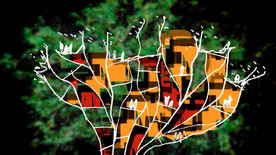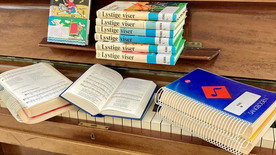
Baroque interiors
Online via link: https://kadk.zoom.us/j/67702105496
Danmark
I løbet af foråret 2021 præsenterer Det Kongelige Akademi - Arkitektur en online forelæsningsrække om førmoderne arkitektur. I denne forelæsning vil Natalie Koerner, adjunkt ved Det Kongelige Akademi - Institut for Bygningskunst og Design, forelæse om barokkens interiører. Forelæsningen vil være på engelsk.

The focus of this lecture on baroque architecture is the interior, particularly of castles in central and northern Germany. The function of rooms in the early modern period were mostly defined by heat sources and furniture. Furniture was often spatial – beds could be closed off (i.e., with curtains) to form smaller rooms, wooden ‘closets’ were used as studies and prayer rooms, mobile textile baldachins could mark off areas of limited access around thrones, etc. The lecture is divided into four main themes:
Mobility: In the Baroque period mobility played an important role (see also the compendium text). Mobility allowed ideas, styles and spatial concepts—such as those pertaining to the Baroque—to spread across Europe. I will for example show how Italian stylistic elements travelled to Germany, due to the employment of foreign craftsmen. Mobility also formed an important part of daily live: moving for marriages and employment was common. Most courts were also mobile, as rulers moved frequently between different (hunting) castles and residencies, often travelling with their tapestries and bed-hangings.
Privacy: Furniture could thus create an element of continuity in between different residencies. Furniture was of representative importance, it was spatial and micro-climatic, in the sense that it could enclose warmer areas within the rooms. Furniture also often enabled moments of privacy within the institutional and representative space and function of a Baroque castle. As we will see, the inhabitants of the interiors we will examine had quite differently private lives than today.
Owner/client/designer: The spread of stylistic elements such as those of the Baroque period, was closely related to the initiative of wealthy and educated patrons. They would invite craftsmen and architects over great distances to construct their castles and decorate their residencies. The patron’s taste and education would have great influence on the craftsmen’s work. Using August of Dresden as an example, I will show that at times the client would even turn into the designer himself, producing sketches and models that architects and builders then had to realizes.














